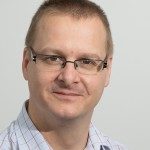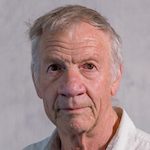
The Signal Processing Division (also fondly referred to as the DSP Division thanks to its penchant for solving problems digitally) works in a variety of areas that involve the manipulation of information-bearing signals. The division comprises both those people who specialise in the transmission of such signals over large distances (Telecommunications) and through complex networks (Network Theory), and those people who are interested in extracting and embedding the information in the signal – whether it be digital data (Digital Communications and Media) or natural-world signals such as speech (Speech Processing) and images (Image Processing).
A visitor looking to find the Signal Processing Division’s DSP Laboratory is encouraged to follow the rich aroma of freshly-brewed filter coffee, the substance that fuels approximately 30 post-graduate researchers in our well-equipped laboratories. Since so much of our research involves the manipulation of information, the main work area is a large computer network running Ubuntu Linux. The division also maintains three smaller laboratories for specialised equipment and hardware development. Five full-time faculty members oversee the research effort.
The activities in the Signals Division can be divided into five primary research areas, each with its own projects and staff members.
Contact person: Prof. TR Niesler: trn@sun.ac.za OR Tel: +27-21-808 4118
Speech Processing
Speech is the type of signal humans prefer to use when directly interacting with one another. Consequently, our interaction with computers and other machines can be significantly enhanced if they, too, are able to interpret and generate natural speech. The division’s research is focused on developing signal-processing and pattern-recognition techniques to apply in speech (and also image) processing. Applications include speech recognition, biometrics and telecommunications. The research team makes use of general statistical machine learning techniques. Software development is done mainly in C++ and is deeply rooted in object-oriented design principles.
The division frequently consults for industry. Current and recently completed projects include:
- The African Speech Technology DACTS innovation fund project
- The Naval Interactive Reference Dictionary
- Afrilator: An English-Afrikaans Speech Translator
- English-isiXhosa Speech Translation
If you were to walk into the DSP Laboratory now, you would be likely to see people working on related topics, such as speech synthesis, text-to-speech technology, speech recognition, automatic speech translation, speaker identification and verification, speech search tools, and even ways of transforming a speaker’s natural voice into a new one.
We have distinguished ourselves internationally in Speech Processing: the American National Institute for Standards and Technology (NIST) hosts various international evaluations/competitions each year to measure the state of the art in various fields. These evaluations draw entries from strong research groups from some of the best known universities and industries worldwide. Since 2002 the Signal Processing Division has taken part in several of these evaluations, primarily in the field of speaker recognition, but also in language identification and spoken topic recognition. We have consistently done well in these evaluations.
Prof. TR Niesler and Prof. H Kamper is actively involved in the research.
Image Processing
Signals need not be only voltages or sounds that change over time – they can also be colours and intensities that change across two- or three-dimensional space. Therefore, the Signals Division also has an interest in processing real-world images, such as handwritten signatures and characters, or photographs and videos of faces and movement. This work is done in collaboration with the Applied Mathematics Research Group.
Prof. JA du Preez and Prof. BM Herbst (Department of Mathematical Sciences) are actively involved in the research.
Satellite Communications
Space-based communication systems are particularly interesting and challenging, since they need to be exceptionally robust, operate reliably on low power and a high-latency link, and cope with Doppler shift and radiation. The Signal Processing Division was involved in two payloads on the Sumbandila Satellite, and is already actively working on subsystems for future South African satellites. Research in this environment gives postgraduate students the opportunity to immerse themselves in the development of a complete communication system – from conceptualisation and budgeting, through design and implementation, up to testing and commissioning a functional space-based communication system. The projects also tend to be collaborative in nature, with researchers working shoulder-to-shoulder with experienced engineers in academia and industry.
Dr R Wolhuter is actively involved in the research.
Research partners include SunSpace and the Katholieke Universiteit Leuven.
Network Applications
Getting information from point A to point B is one thing; reliably routing that information from A through B, C, D to Z is a completely different kettle of fish. In this area, the Signal Processing Division studies protocols for data networking, teletraffic modelling, and network topology design. Here the emphasis lies very much on the telecommunications system as a whole, and on how to integrate different technologies into a coherent, reliable network.
Many of the Signal Processing Division’s research activities in this field involve improving the performance and reliability of ad-hoc networks and wireless mesh networks. These research projects also tend to be strongly application-driven, such as the deployment of wireless sensor networks for environmental monitoring, managing urban traffic on roads, or developing improved techniques for image streaming over mobile networks.
Work on Network Applications also forms part of the Telkom Centre of Excellence at Stellenbosch University.
Dr R Wolhuter is actively involved in the research.
The Media Lab
The MIH Media Lab at Stellenbosch University was founded with the purpose to promote research in “new media” technology in South Africa. In close partnership with MIH, the internet division of Naspers, the MIH Media Lab aims to participate in research on next-generation technologies that will influence the ways in which humans interact with computers, the Web and other forms of electronic media. Prof Herman Kamper and Prof HA Engelbrecht is actively involved in the research.
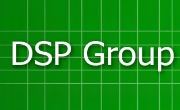 Digital Signal Processing GroupWe are a research group within the Department of Electrical and Electronic Engineering concerned with Digital Signal Processing. Yearly we attract numerous postgraduate engineering students studying towards their Masters and PhD degrees. The group has many areas of particular focus and research targeting signal processing of various kinds. These include speech recognition, image processing, broadcasting, network protocols, under-water communication and software defined radio.
Digital Signal Processing GroupWe are a research group within the Department of Electrical and Electronic Engineering concerned with Digital Signal Processing. Yearly we attract numerous postgraduate engineering students studying towards their Masters and PhD degrees. The group has many areas of particular focus and research targeting signal processing of various kinds. These include speech recognition, image processing, broadcasting, network protocols, under-water communication and software defined radio.
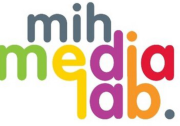 The Media Lab
The Media Lab
The Media Lab hosts an innovative and fun team of students and staff, working on projects related to data analysis and machine learning.
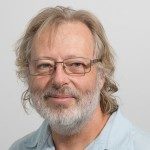
- Research activities
-
The Signal Processing Division (also fondly referred to as the DSP Division thanks to its penchant for solving problems digitally) works in a variety of areas that involve the manipulation of information-bearing signals. The division comprises both those people who specialise in the transmission of such signals over large distances (Telecommunications) and through complex networks (Network Theory), and those people who are interested in extracting and embedding the information in the signal – whether it be digital data (Digital Communications and Media) or natural-world signals such as speech (Speech Processing) and images (Image Processing).
A visitor looking to find the Signal Processing Division’s DSP Laboratory is encouraged to follow the rich aroma of freshly-brewed filter coffee, the substance that fuels approximately 30 post-graduate researchers in our well-equipped laboratories. Since so much of our research involves the manipulation of information, the main work area is a large computer network running Ubuntu Linux. The division also maintains three smaller laboratories for specialised equipment and hardware development. Five full-time faculty members oversee the research effort.The activities in the Signals Division can be divided into five primary research areas, each with its own projects and staff members.
Contact person: Prof. TR Niesler: trn@sun.ac.za OR Tel: +27-21-808 4118Speech Processing
Speech is the type of signal humans prefer to use when directly interacting with one another. Consequently, our interaction with computers and other machines can be significantly enhanced if they, too, are able to interpret and generate natural speech. The division’s research is focused on developing signal-processing and pattern-recognition techniques to apply in speech (and also image) processing. Applications include speech recognition, biometrics and telecommunications. The research team makes use of general statistical machine learning techniques. Software development is done mainly in C++ and is deeply rooted in object-oriented design principles.
The division frequently consults for industry. Current and recently completed projects include:- The African Speech Technology DACTS innovation fund project
- The Naval Interactive Reference Dictionary
- Afrilator: An English-Afrikaans Speech Translator
- English-isiXhosa Speech Translation
If you were to walk into the DSP Laboratory now, you would be likely to see people working on related topics, such as speech synthesis, text-to-speech technology, speech recognition, automatic speech translation, speaker identification and verification, speech search tools, and even ways of transforming a speaker’s natural voice into a new one.
We have distinguished ourselves internationally in Speech Processing: the American National Institute for Standards and Technology (NIST) hosts various international evaluations/competitions each year to measure the state of the art in various fields. These evaluations draw entries from strong research groups from some of the best known universities and industries worldwide. Since 2002 the Signal Processing Division has taken part in several of these evaluations, primarily in the field of speaker recognition, but also in language identification and spoken topic recognition. We have consistently done well in these evaluations.
Prof. TR Niesler and Prof. H Kamper is actively involved in the research.
Image Processing
Signals need not be only voltages or sounds that change over time – they can also be colours and intensities that change across two- or three-dimensional space. Therefore, the Signals Division also has an interest in processing real-world images, such as handwritten signatures and characters, or photographs and videos of faces and movement. This work is done in collaboration with the Applied Mathematics Research Group.
Prof. JA du Preez and Prof. BM Herbst (Department of Mathematical Sciences) are actively involved in the research.
Satellite Communications
Space-based communication systems are particularly interesting and challenging, since they need to be exceptionally robust, operate reliably on low power and a high-latency link, and cope with Doppler shift and radiation. The Signal Processing Division was involved in two payloads on the Sumbandila Satellite, and is already actively working on subsystems for future South African satellites. Research in this environment gives postgraduate students the opportunity to immerse themselves in the development of a complete communication system – from conceptualisation and budgeting, through design and implementation, up to testing and commissioning a functional space-based communication system. The projects also tend to be collaborative in nature, with researchers working shoulder-to-shoulder with experienced engineers in academia and industry.
Dr R Wolhuter is actively involved in the research.
Research partners include SunSpace and the Katholieke Universiteit Leuven.
Network Applications
Getting information from point A to point B is one thing; reliably routing that information from A through B, C, D to Z is a completely different kettle of fish. In this area, the Signal Processing Division studies protocols for data networking, teletraffic modelling, and network topology design. Here the emphasis lies very much on the telecommunications system as a whole, and on how to integrate different technologies into a coherent, reliable network.
Many of the Signal Processing Division’s research activities in this field involve improving the performance and reliability of ad-hoc networks and wireless mesh networks. These research projects also tend to be strongly application-driven, such as the deployment of wireless sensor networks for environmental monitoring, managing urban traffic on roads, or developing improved techniques for image streaming over mobile networks.
Work on Network Applications also forms part of the Telkom Centre of Excellence at Stellenbosch University.
Dr R Wolhuter is actively involved in the research.
The Media Lab
The MIH Media Lab at Stellenbosch University was founded with the purpose to promote research in “new media” technology in South Africa. In close partnership with MIH, the internet division of Naspers, the MIH Media Lab aims to participate in research on next-generation technologies that will influence the ways in which humans interact with computers, the Web and other forms of electronic media. Prof Herman Kamper and Prof HA Engelbrecht is actively involved in the research.
- Laboratories and Groups
-
 Digital Signal Processing GroupWe are a research group within the Department of Electrical and Electronic Engineering concerned with Digital Signal Processing. Yearly we attract numerous postgraduate engineering students studying towards their Masters and PhD degrees. The group has many areas of particular focus and research targeting signal processing of various kinds. These include speech recognition, image processing, broadcasting, network protocols, under-water communication and software defined radio.
Digital Signal Processing GroupWe are a research group within the Department of Electrical and Electronic Engineering concerned with Digital Signal Processing. Yearly we attract numerous postgraduate engineering students studying towards their Masters and PhD degrees. The group has many areas of particular focus and research targeting signal processing of various kinds. These include speech recognition, image processing, broadcasting, network protocols, under-water communication and software defined radio. The Media Lab
The Media Lab
The Media Lab hosts an innovative and fun team of students and staff, working on projects related to data analysis and machine learning. - Research Staff
-
 (Emeritus) SPEECH PROCESSING AND PATTERN RECOGNITIONSpeaker, speech and language recognition
(Emeritus) SPEECH PROCESSING AND PATTERN RECOGNITIONSpeaker, speech and language recognition




